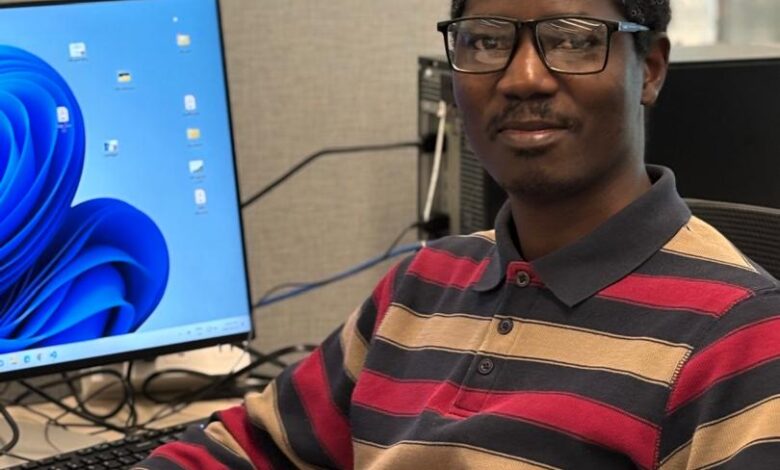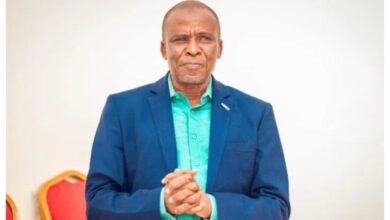Ghanaian Scientist pioneers smarter 6G: transmitting meaning with quantum security


As the world races toward an era where billions of devices, digital twins, and immersive virtual environments converge on the Internet of Everything, traditional approaches to wireless connectivity are reaching their limits.
Dr. James Adu Ansere, a Ghanaian scientist and Postdoctoral Research Fellow at the Canada Excellence Research Chair-Next Generation Communications & Technology (CERC-NGCT) lab, Memorial University, is pioneering a revolutionary solution.
His work integrates Quantum Computing (QC) and Semantic Communications (SC) to architect 6G networks that transmit intelligence and meaning, not just raw data, with unparalleled efficiency and security.
The Quantum-Semantic Revolution: Redefining 6G
Traditional networks, such as 5G, focus on reliably delivering every bit of data. While this approach has served current applications effectively, it is fundamentally unsustainable for the exponential data demands of 6G and beyond.
Dr. Ansere’s research addresses this through a dual approach:
1. Semantic Communications: This paradigm shifts the focus from data transmission to meaning extraction. Instead of sending an entire video feed, a semantic-powered autonomous vehicle would transmit only the critical insight: “A pedestrian is 10 meters ahead.” This drastically reduces bandwidth, cuts latency, and boosts efficiency.
2. Quantum Computing Integration: QC principles provide the computational power for real-time semantic processing and guarantee robust security. This ensures the intelligent data generated by future applications is processed at unprecedented speeds and protected from emerging cyber threats.
“This isn’t just about faster speeds; it’s about building a truly intelligent network architecture. By fusing semantic communications with quantum computing, we are creating a future where connectivity is seamless, intuitive, and secure,” says Dr. Ansere.
From Ghana to Global Recognition: A Distinguished Career
Dr. Ansere’s path to the forefront of telecom research is marked by academic excellence and a commitment to practical impact. His distinguished career includes:
- European Commission Seal of Excellence: for his Marie Skłodowska-Curie Postdoctoral Fellowship proposal. A competitive endorsement signaling that his proposal met the highest international standards for scientific excellence, feasibility, and impact. This distinction underscores the global competitiveness of his quantum-and-6G research agenda.
- Top-Tier Publications & Scholarly Service: He has published in top-notch IEEE venues and serves as peer-reviewed in wireless communications and emerging quantum-inspired methods. This reinforces community standards in rigor, reproducibility, and ethical review.
- IEEE Best Paper Award: for seminal contributions to wireless systems.
- Outstanding Best International PhD Student: at Hohai University, China. This award marks exceptional scholarly performance, publication quality, and research leadership during his doctoral studies in Information & Communication Engineering
Prior to his current role at Memorial University, Dr. Ansere dedicated years to transformative leadership at Sunyani Technical University (STU) in Ghana. His multifaceted service included roles as Deputy Director of Research and Development, Head of Department (HoD), Faculty Exams Officer, and Hall Master. This experience ingrained in him a focus on developing accessible, deployable technologies that serve human needs.
“My goal is to ensure this quantum-semantic framework is not just an academic achievement, but a practical solution for emerging economies,” he stated.
Real-World Applications: Transforming critical sectors
Dr. Ansere’s research targets high-stakes, data-intensive environments:
- Intelligent Autonomous Systems: enables self-driving cars and drones to share critical decisions and intent, not raw sensor data, optimizing traffic and enhancing safety with quantum-secured commands.
- Next-Generation Telemedicine: allows high-fidelity medical data and surgical feeds to be transmitted over limited bandwidth by prioritizing critical clinical information, revolutionizing remote care in underserved regions.
- Immersive Extended Reality (XR): makes the Metaverse and industrial Digital Twins scalable by transmitting only changes in state or user intent, enabling lag-free, global virtual environments.
- Emergency Response: establishes resilient mesh networks in disasters by transmitting only essential data (e.g., locations, medical needs), conserving power and bandwidth for life-saving coordination.
Global recognition and vision for inclusive connectivity
Dr. Ansere’s work has garnered international acclaim. Prof. Trung, Director of CERC-NGCT, noted, “James’s work bridges ground-breaking technologies…his innovative nature of combining quantum computing with semantic communications has significant potential impact on global wireless systems.”
His understanding and dealing with complex wireless problem are rapidly gaining momentum globally.
Prof. Abbas Mohammed, Blekinge Institute of Technology, Sweden, noted: “James’s work recognised by MSCA-PF is testimonial of his resiliency and state-of-the-art ideas. The recognition from the European Commission and IEEE validates that his integrated approach is vital for the global communication landscape.”
His presence at Memorial University strengthens Canada’s 6G leadership while fostering global research bridges, particularly with Africa. Dr. Ansere is uniquely positioned to ensure 6G is developed for global benefit, not just advanced economies.
“The beauty of this technology is that it democratizes access,” Dr. Ansere explains. “A remote clinic in rural Ghana can access the same quality of telemedicine as a major urban hospital,” he said.
Current focus and road ahead
Dr. Ansere is currently translating theory into practice by developing proof-of-concept models, creating practical algorithms, and designing quantum-secured protocols. While 6G commercialization is expected around 2030, his foundational research is critical to ensuring the next generation of wireless technology is intelligent, secure, and accessible to all, from St. John’s to Sunyani. His current research involves:
- Practical Algorithm Development: creating efficient semantic extraction and quantum-enhanced processing algorithms that can run on near-term quantum devices
- Security Protocol Design: establishing quantum-secured semantic communication protocols resistant to emerging cyber threats
- Standards Contribution: serving as a critical voice in global conversations shaping 6G standardization and deployment strategies
- Cross-Sector Collaboration: partnering with industry and government stakeholders to identify priority use cases and deployment pathways
His work is generating high-impact academic publications while simultaneously addressing the practical engineering challenges that must be overcome before quantum-semantic networks transition from laboratory concepts to deployed infrastructure serving billions of users worldwide.
DISCLAIMER: The Views, Comments, Opinions, Contributions and Statements made by Readers and Contributors on this platform do not necessarily represent the views or policy of Multimedia Group Limited.
DISCLAIMER: The Views, Comments, Opinions, Contributions and Statements made by Readers and Contributors on this platform do not necessarily represent the views or policy of Multimedia Group Limited.
Source link





